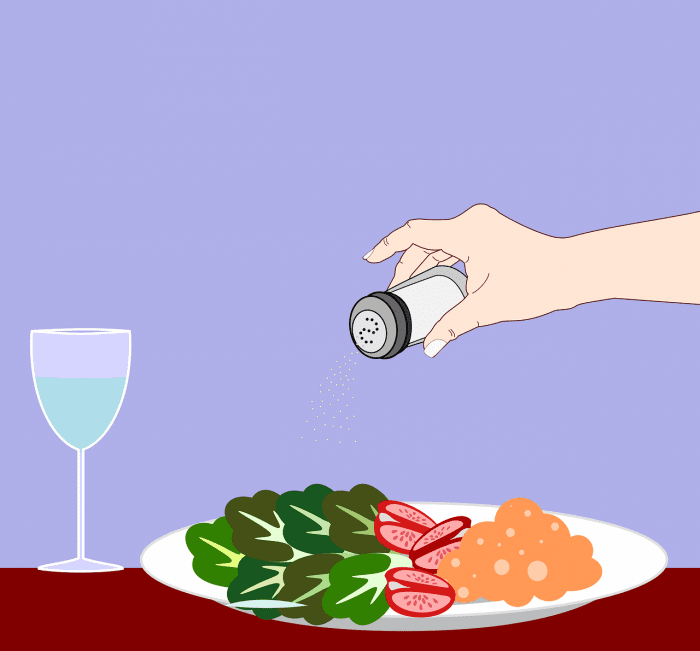A&L Home Page Container
Times … and dates: April 14 to April 21, 2022

Thursday April 14
Vanderbilt lecture
The Suffolk County Vanderbilt Museum’s Charles and Helen Reichert Planetarium, 180 Little Neck Road, Centerport will welcome Heather J. Lynch for the inaugural lecture in museum’s “Ecology and Climate Change Lecture Series” titled Mapping Penguins, with Satellites, Drones, and Other Technologies at 7 p.m. Professor Lynch will share insights from her innovative research into the population dynamics of penguins on the Antarctic Peninsula due to climate change, tourism, and fishing. Tickets are $6 per person. To register, visit www.vanderbiltmuseum.org.
Friday April 15
Sunset Yoga Flow
Start your weekend with the first Sunset Yoga Flow of the season at the Suffolk County Vanderbilt Museum, 180 Little Neck Road, Centerport on the Great Lawn overlooking Northport Harbor at 6:30 p.m., courtesy of Pop Up Prana Yoga. Check-in begins at 6 p.m. Mats will be provided upon request. Tickets are $30 adults, $15 children. To register, visit www.vanderbiltmuseum.org.
Wintertide concert
The Port Jefferson Village Center, 101-A E. Broadway, Part Jefferson continues its Wintertide concert series with a concert by singer-songwriter Cassandra House from 7:30 to 9 p.m. $5 donation at the door. Questions? Call 802-2160.
Saturday April 16
Grist Mill tours
The Stony Brook Grist Mill, Harbor Road, Stony Brook reopens for the season today from 1 to 4 p.m. Learn about the inner workings of the mill as it crushes grain into flour and hear about its 323 year history on a guided tour will a miller during guided tours and a visit the Country Store. Tours continue on April 23 and 24 and then every Sunday after through October. Admission is $4 for adults, $2 for children. Cash only. For more information on the Stony Brook Grist Mill and for programs and large group tours, call The Ward Melville Heritage Organization at 751-2244.
Wildlife Diversity program
Suffolk County Vanderbilt Museum, 180 Little Neck Road, Centerport will present a Wildlife Diversity program at 9 a.m. and again at 10:30 a.m. Join Biologist Ranger Eric Powers as he introduces you to his Animal Ambassadors! Discover where in the world they come from, their special adaptations and more. You could meet exotic animals such as bugs, amphibians, reptiles, birds, and mammals! You never know what animal is coming out next. Tickets are $15 per person. To order, visit www.vanderbiltmuseum.org.
Caleb Smith Hike
Caleb Smith State Park Preserve, 581 W. Jericho Turnpike, Smithtown presents an adult program titled What’s Doing the Blooming? Spring Edition from 10:30 a.m. to noon. Join a nature educator to explore the grounds of the park in search of early blooming wildflowers. See if you can identify these spring treasures with the help of a field guide. $4 per person. Advance reservations required by calling 265-1054.
Easter Celebration at the Shoppes
The Shoppes at East Wind, 5768 Route 25A, Wading River hosts an Easter Celebration today from 11 a.m. to 5 p.m. Ride the Easter Bunny on the Carousel, enjoy a bounce house, face painting, craft vendors, shopping and a free photo with the Easter Bunny. Call 929-3500 x 708.
Sunday April 17
Port Jeff Winter Farmers Market
The Port Jefferson Winter Farmers Market will be held every Sunday from 10 a.m. to 2 p.m. at the Port Jefferson Village Center, 101-A E. Broadway, Port Jefferson through April 25. This year’s vendors include Brownies N’ Stuff, Joann’s Desserts, Farm Fresh Potions, Mello Munch Awesome Granola, O Honey Bee Farm, Sweet Melissa Dip, Springbrook Hollow Farm Distillery, Spilt Milk Macarons and many more. For more information, call 802-2160.
Caumsett Hike
Join the staff at Caumsett State Historic Park Preserve, 25 Lloyd Harbor Road, Huntington for a 6-mile, hilly, moderately paced walk in the eastern section from 10 a.m. to 1 p.m. to observe the parks beauty. For reasons of safety no children under 18 years of age are permitted to attend. Bring drinking water. $4 per person. Advance registration required by calling 423-1770.
Port Jefferson Easter Parade
The Greater Port Jefferson Chamber of Commerce hosts its annual old-fashioned “Easter Bonnet” Walking Parade along Main Street in Port Jefferson wat noon. Kick off is in front of Theatre Three and will end at the Port Jefferson Village Center at Harborfront Park for an Easter Egg Hunt for ages 2 to 8 at 12:15 p.m. . All walkers welcome — Wear your Easter best. No rain date. For more information, call 473-1414.
Monday April 18
TVHS lecture
The Three Village Historical Society continues its lecture series via Zoom with A New York Experience — A Constant Affair at 7 p.m. New York is the place where all the aspirations of the western world converge. This PowerPoint presentation, in concert with an illuminating lecture, offers a visual survey of America’s greatest city between 1800 and 1950. You will enjoy the artists who devoted their talents to depicting the streets, parks, bridges, skyscrapers, as well as the daily escapades of the people. Presented by art historian Louise Cella Caruso and moderated by TVHS Director Mari Irizarry. $5 suggested donation, free for members. To register, visit www.tvhs.org.
Tuesday April 19
No events listed for this day. Wednesday 20 Jazz Loft Trio in concert The Jazz Loft, 275 Christian Ave., Stony Brook presents The Jazz Loft Trio in concert from 7 to 9:30 p.m. Tickets are $10 from 7 to 8 p.m., $5 after 8 p.m. To order, visit www.thejazzloft.org.
Thursday April 21
Stony Brook Walking Tour
Join the Ward Melville Heritage Organization for a Secrets of Stony Brook Village walking tour at 11:50 a.m. and again at 3:50 p.m. Hear some newly uncovered stories while strolling through the historic village. $10 per person. Reservations required by call 751-2244.
Vanderbilt lecture
Rescheduled from April 7 — Best-selling author and historian Betsy Prioleau will speak about her latest book, Diamonds and Deadlines: A Tale of Greed, Deceit, and a Female Tycoon in the Gilded Age, the first major biography of the glamorous and scandalous Miriam Leslie – a titan of publishing and an unsung hero of women’s suffrage, at the Suffolk County Vanderbilt Museum’s Charles and Helen Reichert Planetarium, 180 Little Neck Road, Centerport at 6 p.m. The event will be followed by a book signing. Tickets are $20, members free. To order, visit www.vanderbiltmuseum.org.
Carol Wincenc in concert
Stony Brook University’s Staller Center for the Arts, 100 Nicolls Road, Stony Brook will welcome Carol Wincenc in concert in the Recital Hall at 7 p.m. Hailed “Queen of the Flute” at the outset of her 50-year career, flutist Carol Wincenc delights audiences with her signature charismatic, high virtuosity and deeply heartfelt musicality and has performed with Jessye Norman, Emanuel Ax and Yo-Yo Ma. Tickets range from $44 to 48. To order, call 632-2787 or visit www.stallercenter.com.
An evening of jazz
The Jazz Loft, 275 Christian Ave., Stony Brook welcomes the Big Little Bad Band in concert from 7 to 9:30 p.m. featuring vocalist Madeline Kole and original compositions and arrangements by bandleader and pianist Rich Iacona. Tickets are $30 adults, $25 seniors, $20 students, $15 children, under age 5 free. Visit www.thejazzloft.org to order.
Theater
‘Steel Magnolias’
Theatre Three, 412 Main St., Port Jefferson presents Steel Magnolias from April 9 to May 7. Come on down to Truvy’s Louisiana beauty shop where six strong women share their hopes and dreams. Beginning on the day of debutante Shelby’s wedding, the play traces this eccentric and lovable cast of characters as they support each other through life’s many challenges. Stop by for some great laughs and unforgettable friendship. Tickets are $35 adults, $28 seniors and students, $20 children ages 5 and older. To order, call 928-9100 or visit theatrethree.com.
‘A Bronx Tale’
The John W. Engeman Theater, 250 Main St., Northport presents A Bronx Tale from March 24 to May 8. Based on Chazz Palminteri’s classic movie, this streetwise musical will take you to the stoops of the Bronx in the 1960s—where a young man is caught between the father he loves and the mob boss he’d love to be. Featuring a doo-wop score, A Bronx Tale is a story about respect, loyalty, love, and above all else: family. Tickets range from $75 to $80 with free valet parking. To order, call 261-2900 or visit www.engemantheater.com.
Shakespeare’s ‘Henry V’
Suffolk County Community College’s Ammerman Campus, 533 College Road, Selden presents Henry V by Shakespeare at the Shea Theatre, Islip Arts Building on April 13, 14, 15, 16, 21, 22 and 23 at 7:30 p.m. and April 24 at 2 p.m. Mature content. General admission is $14, students 16 years of age or younger $9.75, veterans and Suffolk students with current ID receive one free ticket. To order, call 451-4163.
‘Kinky Boots’
Up next at the John W. Engeman Theater, 250 Main St., Northport is Kinky Boots from May 19 to July 3. With songs by Cyndi Lauper and book by Harvey Fierstein, this dazzling, sassy and uplifting musical celebrates a joyous story, inspired by true life events, taking you from the factory floor of a men’s shoe factory to the glamorous catwalks of Milan! Tickets range from $75 to $80 with free valet parking. To order, call 261-2900 or visit www.engemantheater.com.
‘Mamma Mia!’
Theatre Three, 412 Main St., Port Jefferson closes its 2021-2022 with Mamma Mia! from May 21 to June 25. ABBA’s timeless hits tell the enchanting story! On the eve of her wedding, a daughter’s quest to discover the identity of her father brings three men from her mother’s past back to the Greek island paradise they last visited twenty years ago. Featuring such chart toppers as “Knowing Me, Knowing You,” “Take a Chance on Me,” “Gimme! Gimme! Gimme!,” and “Dancing Queen,” this is a trip down the aisle you’ll never forget. Contains adult themes and situations. Tickets are $35 adults, $28 seniors and students, $20 children ages 5 and older. To order, call 928-9100 or visit theatrethree.com.
Film

Relive the 1980’s with a movie about the boy band a-ha at Theatre Three in Port Jefferson on April 18 at 7 p.m., part of the award-winning Port Jefferson Documentary Series spring line-up. Photo from PJDS
‘A-HA: THE MOVIE’
The Port Jefferson Documentary Series continues its Spring season with a screening of ‘A-HA: THE MOVIE’ at Theatre Three, 412 Main Street, Port Jefferson on April 18 at 7 p.m. The music of Queen and the Velvet Underground instilled a sense of destiny in three teenagers living in a small town in 1970s Norway. That dream led to A-ha: the synth-pop trio featuring keyboardist Magne Furuholmen, vocalist Morten Harket, and guitarist Pål Waktaar-Savoy who burst onto the international scene with 1985’s “Take on Me,” buoyed by an iconic sketch-animation video by Irish-British director Steve Barron. Featuring new interviews with the band and previously unreleased behind-the-scenes footage. Preceded by a special concert with singer-songwriter Bryan Gallo at 6 p.m. and followed by a Q&A via Zoom with Director Thomas Robsahm. Tickets are $10 at the door or at www.portjeffdocumentaryseries.com.
Italian Film Series
The Center for Italian Studies at Stony Brook University, Room E-4340, Melville Library, 100 Nicolls Road, Stony Brook will host a series of film screenings of Alice Rorwacher movies introduced and discussed by Graduate Fellow Antonio Fideleo including Le Meraviglie (2014) on April 18, Lazzaro Felice (2018) on April 25 and Omelia Contadina (2020) on May 2. Films are in Italian with English subtitles. All screenings begin at 5:30 p.m. For more information, call 632-7444.
Vendors Wanted
◆ Calling all makers, artisans and crafters! Benner’s Farm, 56 Gnarled Hollow Road, East Setauket welcomes vendors for its annual Easter Egg Hunts on April 16 and 17 from 10 a.m. to 4 p.m. $50 per day or $80 both days for a 10’ by 10’ spot. Call 631-689-8172 or email [email protected] for further info.
◆ Huntington Historical Society will hold its annual “Antiques in April” sale on the grounds of the Daniel Kissam House, 434 Park Ave., Huntington on April 23 and 24 from 10 a.m. to 4 p.m. $100 registration fee for vendors. Visit www.huntingthistoricalsociety.org for an application or call 631-427-7045, ext. 401.
◆ The Whaling Museum, 301 Main St., Cold Spring Harbor seeks antique vendors for its outdoor Spring Antique Sale on May 1 from 10 a.m. to 4 p.m. For an application, visit www.cshwhalingmuseum.org. For more information, call 631-367-3418.
◆ Bethel Hobbs Community Farm, 178 Oxhead Road, Centereach seeks vendors for its Spring Craft Fair on May 15 from 10 a.m. to 4 p.m. (rain date May 22). $50 for a 10X10 spot. Food trucks also wanted. For more information, email Alex at [email protected].
◆ Smithtown Historical Society, 239 E. Main St., Smithtown seeks vendors for its Spring Farm Festival on May 15 from noon to 4 p.m. Call 631-265-6768 for more information.
◆ Harborfields Public Library, 31 Broadway, Greenlawn is looking for craft vendors for its annual outdoor Friends of the Library Craft & Flea Market on May 21 from 10 a.m. to 4 pm. The non-refundable fee for a 10X10 space is $35. To apply, visit www.harborfieldslibrary.org/friends.
◆ East End Arts, 133 E. Main St., Riverhead will host the 26th annual Community Mosaic Street Painting Festival in Downtown Riverhead on May 29 from noon to 5 p.m. Craft/artisan vendors and food/beverage vendors may visit www.eastendarts.org for an application or call 631-727-0900.
◆ The Yaphank Historical Society seeks vendors for its annual Spring Yard Sale on the grounds of the Hawkins House, 4 Yaphank Ave., Yaphank on May 21 from 9 a.m. to 4 p.m. Rain date is May 22. Vendor fee is $10 per spot. Call 631-924-4803 or visit www.yaphankhistorical.org.
◆ Commack United Methodist Church, 486 Townline Road, Commack seeks vendors for its Community Yard Sale on June 11 from 10 a.m. to 3 p.m. Fee is $25 per space. Tables are not supplied and the event is held rain or shine. Outdoor spaces are 10’ by 10’; indoor spaces 6’ by 6’. For additional information, call 631-499-7310 or email [email protected].
◆ Calling all artists and fine crafters! Art League of Long Island will present its 53rd annual Art in the Park Fine Art & Craft Fair at Heckscher Park in Huntington on June 4 and 5 from 10 a.m. to 5 p.m. Applications for the juried fair will be accepted at www.artleague.org through May 20. For more information, call 631-462-5400.
All phone numbers are in (631) area code unless otherwise noted.




















